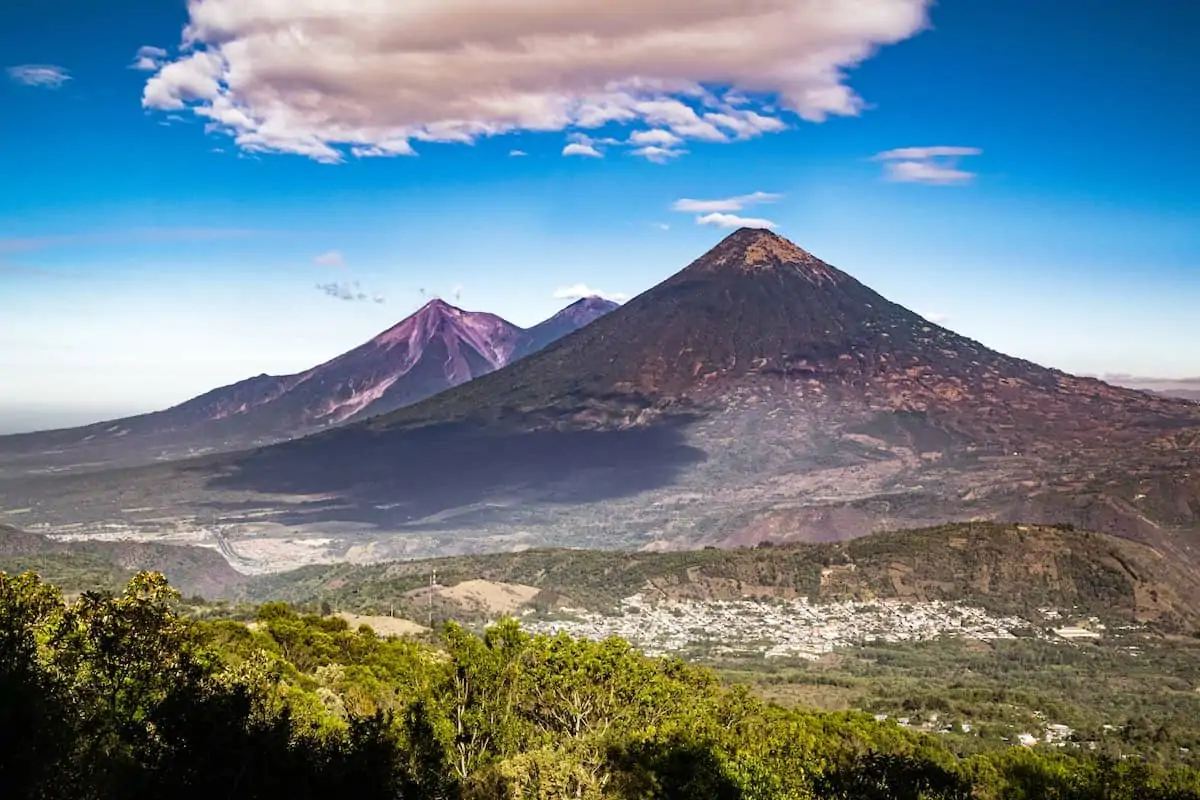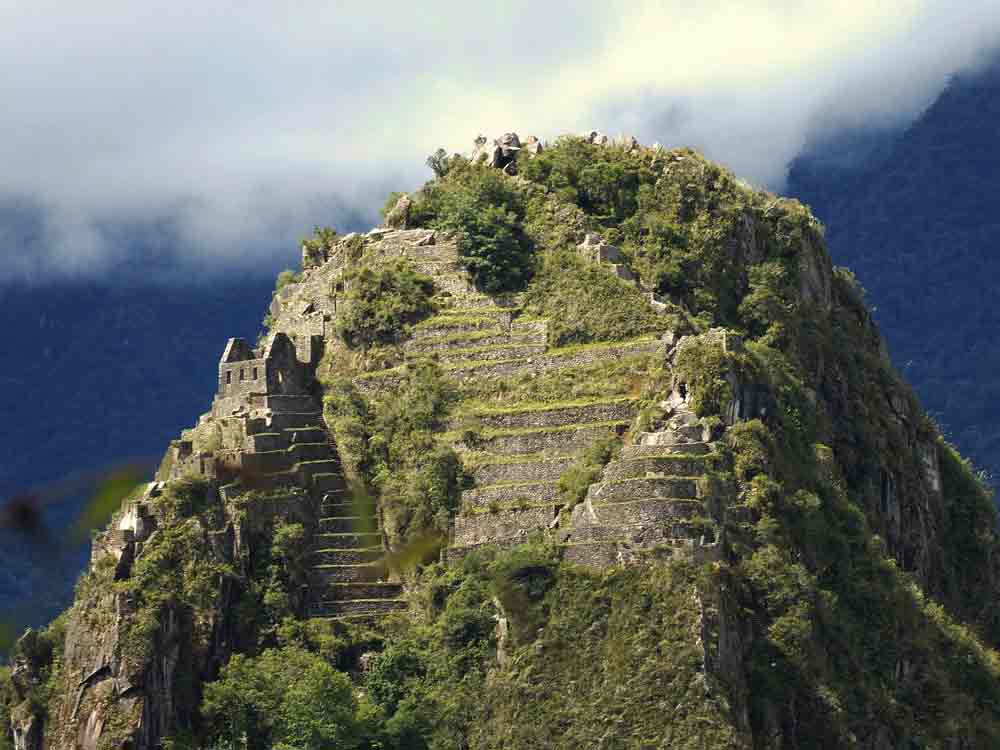What are some of the interesting facts about Guatemala which boasts a rich tapestry of culture, history, and natural beauty? With its diverse landscapes ranging from volcanic peaks to lush rainforests and serene lakes, this country offers a captivating blend of adventure and tranquility. Home to ancient Mayan ruins such as Tikal, which whisper tales of a bygone era, Guatemala stands as a testament to the resilience and ingenuity of its indigenous peoples. Its vibrant markets, adorned with colorful textiles and bustling with the rhythm of daily life, offer a glimpse into the country’s living heritage. In this article, I will talk about some interesting facts about Guatemala.
Interesting Facts About Guatemala: History, Culture, Travel
Guatemala’s colonial architecture, particularly in cities like Antigua Guatemala, reflects a fusion of Spanish influence with indigenous traditions. Yet, beyond its picturesque scenery and architectural marvels, Guatemala grapples with social and economic challenges, including poverty and political instability. Nevertheless, its warm and hospitable people, known for their rich traditions and vibrant celebrations, continue to imbue the country with a sense of resilience and hope for a brighter future. Here are some interesting facts about Guatemala:
1. Cradle of Mayan Civilization: Ancient Wonders Amidst the Greenery
Guatemala stands as the cradle of the ancient Mayan civilization, a testament to its rich cultural heritage and historical significance. From the towering pyramids of Tikal to the intricately carved stelae of Copan, Guatemala’s archaeological sites offer a fascinating glimpse into the achievements and legacy of one of the world’s most advanced ancient civilizations. Amidst the lush rainforests and mist-covered mountains, these ancient wonders stand as monuments to the ingenuity, spirituality, and artistry of the Mayan people, inspiring awe and wonder in all who visit. As guardians of this cultural legacy, Guatemala takes pride in preserving and showcasing its Mayan heritage, inviting visitors to embark on a journey through time and explore the mysteries of the past.
2. A Land of Volcanoes: Nature’s Fiery Majesty
Guatemala’s dramatic landscape is shaped by the fiery forces of nature, with over 30 volcanoes dotting its rugged terrain. Situated along the Pacific Ring of Fire, these majestic peaks—some active, others dormant—tower over the landscape, casting a dramatic silhouette against the sky. From the smoldering cone of Volcán Pacaya to the serene beauty of Volcán Acatenango, Guatemala’s volcanoes offer adventurers the opportunity to witness nature’s raw power and sublime beauty up close. Whether hiking through lush cloud forests, marveling at steaming lava flows, or soaking in volcanic hot springs, Guatemala’s volcanoes provide a thrilling backdrop for outdoor exploration and adventure, leaving a lasting impression on all who dare to explore their rugged slopes.
3. Lake Atitlán: A Gem Nestled in the Highlands
Lake Atitlán, nestled amidst the mist-shrouded highlands of Guatemala, is a jewel of natural beauty and cultural significance. Encircled by towering volcanoes and vibrant indigenous villages, this deep volcanic lake captivates visitors with its serene blue waters and breathtaking vistas. From the bustling markets of Panajachel to the tranquil shores of San Pedro la Laguna, Lake Atitlán beckons travelers to immerse themselves in its timeless beauty and vibrant culture. Whether kayaking on its tranquil waters, hiking along scenic trails, or simply admiring the sunset from a lakeside café, Lake Atitlán offers a sanctuary of peace and tranquility amidst Guatemala’s lush highland landscape.
4. The Vibrant Capital: Guatemala City
Guatemala City, the bustling capital of Guatemala, pulsates with energy and diversity, offering visitors a captivating blend of old-world charm and modern dynamism. From the colonial grandeur of the historic city center to the sleek skyscrapers of the financial district, Guatemala City is a melting pot of cultures, cuisines, and architectural styles. Visitors can explore world-class museums, stroll through leafy parks, and sample delicious street food at bustling markets, immersing themselves in the vibrant rhythms of urban life. Despite its bustling pace, Guatemala City retains a sense of warmth and hospitality, welcoming visitors with open arms and inviting them to discover the many treasures that lie within its bustling streets and vibrant neighborhoods.
5. Antigua Guatemala: A UNESCO Gem
Antigua Guatemala, designated as a UNESCO World Heritage Site, stands as a testament to Guatemala’s rich cultural heritage and architectural splendor. Despite enduring a devastating earthquake in the 18th century, the city’s stunning Spanish colonial architecture has been meticulously preserved, offering visitors a glimpse into its storied past. Cobblestone streets wind past majestic cathedrals, ornate palaces, and charming plazas, evoking a sense of timeless elegance and old-world charm. From the iconic Arco de Santa Catalina to the majestic ruins of the Cathedral of Santiago, Antigua Guatemala is a living museum of Spanish colonial history and a treasure trove of architectural marvels that captivate the imagination and leave a lasting impression on all who visit.
6. Coffee: A Source of National Pride
Coffee holds a special place in Guatemala’s heart, serving as both a major export and a source of national pride. Renowned for its high-quality beans and distinct flavors, Guatemalan coffee is prized by connoisseurs around the world for its rich aroma, smooth body, and complex notes. From the mist-shrouded slopes of the Sierra Madre mountains to the fertile valleys of the Antigua region, coffee plantations dot the landscape, their emerald-green fields providing a picturesque backdrop for visitors and coffee aficionados alike. With a commitment to sustainable farming practices and ethical sourcing, Guatemala’s coffee industry continues to thrive, embodying the country’s dedication to quality, craftsmanship, and environmental stewardship.
7. Colorful Textiles: Weaving a Tapestry of Tradition
Woven textiles are an integral part of Guatemalan culture, embodying centuries of tradition, craftsmanship, and artistic expression. From vibrant huipils and intricately patterned cortes to elaborate ceremonial garments, textiles play a central role in Maya identity and community life. Each region boasts its own distinctive weaving techniques, motifs, and color palettes, reflecting the unique cultural heritage and natural landscapes of its inhabitants. Whether worn as everyday attire, displayed as works of art, or traded in bustling marketplaces, Guatemalan textiles are a vibrant celebration of creativity, craftsmanship, and cultural heritage that continues to thrive and evolve in the modern world.
8. The Quetzal: A Symbol of Freedom and Beauty
The resplendent quetzal, with its iridescent plumage and majestic presence, holds a special place in the hearts of Guatemalans as a national treasure and a symbol of freedom. Revered by ancient Maya as the embodiment of the god Quetzalcoatl, the quetzal is celebrated for its beauty, grace, and elusive nature. Found in the cloud forests of Guatemala’s highlands, the quetzal serves as a reminder of the country’s rich biodiversity and natural splendor. From its appearance on Guatemala’s national flag to its depiction in indigenous art and folklore, the quetzal symbolizes the nation’s resilience, spirit, and reverence for the natural world, inspiring awe and admiration in all who encounter it.
9. Unique Cuisine: A Tapestry of Flavors
Guatemalan cuisine is a vibrant fusion of indigenous Mayan and Spanish influences, characterized by bold flavors, fresh ingredients, and centuries-old traditions. Corn tortillas, beans, and fresh vegetables form the backbone of Guatemalan cuisine, while spices, herbs, and tropical fruits add depth and complexity to its diverse dishes. From hearty stews and tamales to savory tamales and sweet desserts, Guatemalan cuisine offers a tantalizing array of flavors and textures that reflect the country’s cultural diversity and culinary creativity. Whether dining in a bustling market stall or savoring a home-cooked meal with family and friends, the unique flavors of Guatemalan cuisine offer a sensory journey through the country’s rich cultural heritage and gastronomic traditions.
10. Flying Kites for the Dead: Honoring Ancestral Spirits
In Guatemala, the tradition of flying giant, colorful kites on All Souls’ Day is a poignant and symbolic way of honoring deceased loved ones and communicating with ancestral spirits. As families gather in cemeteries to remember and celebrate the lives of their departed relatives, vibrant kites soar high into the sky, carrying messages of love, remembrance, and hope. Each kite is meticulously crafted with intricate designs and personalized messages, reflecting the unique spirit and personality of the departed.
Against the backdrop of the setting sun, these majestic kites dance on the breeze, bridging the divide between the living and the dead and reaffirming the enduring bond between past and present generations. Through this ancient ritual, Guatemalans find solace, connection, and healing as they pay homage to their ancestors and celebrate the cycle of life and death.
11. Mayan Languages Still Spoken: Preserving Cultural Heritage
Despite centuries of colonization and cultural assimilation, around 20 Mayan languages are still spoken in Guatemala today, serving as a testament to the resilience and enduring legacy of this ancient civilization. From the highlands of Quiché to the rainforests of Petén, indigenous communities continue to pass down their ancestral languages from generation to generation, preserving their cultural heritage and identity in the face of modernization and globalization.
Through storytelling, poetry, and oral tradition, Mayan languages serve as a living link to the past, connecting present-day Guatemalans with their rich cultural heritage and spiritual beliefs. As guardians of their linguistic legacy, Mayan speakers embody the spirit of resilience, resistance, and cultural pride that defines Guatemala’s indigenous communities and their enduring quest for recognition and respect.
12. Marimba: The Soulful Sound of Guatemala
The marimba, a wooden xylophone-like instrument with resonating tubes beneath its wooden bars, holds a special place in the heart of Guatemala as a beloved symbol of cultural expression and national pride. With its warm, resonant tones and rhythmic melodies, the marimba is the soulful heartbeat of Guatemalan music, weaving together influences from indigenous Mayan, African, and European traditions.
From lively fiestas and religious celebrations to intimate gatherings and public performances, the marimba’s joyful rhythms and soul-stirring melodies bring people together, fostering a sense of community, connection, and shared identity. As a cultural ambassador for Guatemala, the marimba transcends boundaries of language and geography, spreading the vibrant spirit and rich musical heritage of the country to audiences around the world.
13. Folkloric Dances: Celebrating Tradition and Identity
Traditional dances like the energetic “Baile de los Monos” (Dance of the Monkeys) are vibrant expressions of Guatemala’s rich cultural heritage and diverse regional identities. Rooted in indigenous rituals and customs, these folkloric dances blend elements of storytelling, music, and movement to celebrate themes of community, spirituality, and ancestral wisdom. Whether performed at religious festivals, cultural events, or social gatherings, folkloric dances serve as living expressions of Guatemala’s multicultural tapestry, showcasing the unique rhythms, costumes, and traditions of each region. Through dance, Guatemalans pay homage to their ancestors, celebrate their cultural diversity, and reaffirm their collective identity as a people united by shared history, values, and aspirations.
14. Tikal National Park: Ancient Majesty Preserved
Tikal National Park, designated as a UNESCO World Heritage Site, stands as a testament to Guatemala’s rich archaeological heritage and the grandeur of the ancient Mayan civilization. Nestled amidst the dense rainforests of the Petén region, Tikal’s towering temples, palaces, and pyramids evoke a sense of awe and wonder, transporting visitors back in time to the height of Mayan civilization.
From the iconic Temple of the Great Jaguar to the towering Temple IV, Tikal’s impressive ruins bear witness to the architectural and artistic achievements of the ancient Maya, showcasing their mastery of engineering, astronomy, and urban planning. As visitors explore the jungle-clad pathways and hidden plazas of Tikal, they embark on a journey of discovery and wonder, unraveling the mysteries of a bygone era and marveling at the enduring legacy of one of the world’s greatest civilizations.
15. Chichén Itzá Connection: Bridging Borders and Cultures
While Tikal stands as a testament to Guatemala’s rich Mayan heritage, the nearby Mayan city of Chichén Itzá in Mexico serves as a poignant reminder of the interconnectedness and shared cultural legacy of the Mayan civilization. Despite political boundaries separating the two countries, the ancient Maya forged extensive trade networks, exchanged ideas, and shared cultural practices, enriching each other’s societies and leaving a lasting imprint on the landscape and architecture of the region. From the towering pyramids of Tikal to the iconic El Castillo pyramid of Chichén Itzá, these ancient cities bear witness to the ingenuity, spirituality, and architectural prowess of the Maya, showcasing their enduring legacy and profound impact on the history and culture of Mesoamerica.

16. A Birdwatcher’s Paradise: Exploring Guatemala’s Avian Diversity
With its diverse ecosystems ranging from lush rainforests to highland cloud forests, Guatemala boasts an astonishing array of bird species, making it a paradise for birdwatchers and nature enthusiasts. From the resplendent quetzal and the colorful toucan to the elusive scarlet macaw, Guatemala’s avian inhabitants captivate the imagination with their vibrant plumage, melodious calls, and unique behaviors.
With over 700 bird species recorded across the country, from the shores of Lake Atitlán to the misty mountains of the Alta Verapaz, Guatemala offers endless opportunities for birdwatching and wildlife photography, inviting visitors to immerse themselves in the sights and sounds of its rich avian diversity and experience the thrill of birdwatching in one of the world’s most biodiverse countries.
17. The Importance of Jade: Ancient Treasures and Cultural Significance
For the ancient Maya, jade was more than just a precious stone—it was a symbol of wealth, status, and spiritual power, imbued with deep cultural and religious significance. Revered for its lustrous green hue and rarity, jade was used by the Maya to create exquisite ornaments, ceremonial objects, and ritual offerings, reflecting their sophisticated craftsmanship and reverence for the natural world. Today, jade continues to hold cultural significance in Guatemala, with artisans continuing the tradition of jade carving passed down through generations. From intricately carved pendants and beads to ceremonial masks and figurines, jade remains a cherished symbol of Guatemala’s rich cultural heritage and enduring connection to its ancient past.
18. Traditional Mayan Calendar: A Testament to Maya Civilization’s Advancements
The Maya developed one of the most sophisticated calendar systems in the ancient world, a testament to their advanced mathematical knowledge, astronomical observations, and agricultural practices. Comprising multiple interlocking cycles based on celestial movements, the Mayan calendar served as a tool for tracking time, religious ceremonies, and agricultural cycles, guiding the daily lives and spiritual beliefs of the Maya people.
With its intricate system of days, months, and years, as well as its correlation with celestial events such as solstices and equinoxes, the Mayan calendar showcased the Maya’s deep understanding of astronomy and their profound connection to the cosmos. Today, the traditional Mayan calendar continues to be used by indigenous communities in Guatemala, serving as a living testament to the enduring legacy of Maya civilization and its contributions to human knowledge and culture.
19. Lake Atitlán’s Mayan Villages: Cultural Gems Amidst Natural Beauty
Surrounding the serene waters of Lake Atitlán, Guatemala’s Mayan villages offer a glimpse into the rich tapestry of indigenous culture and tradition that has flourished in the region for centuries. Each village along the lakeshore possesses its own distinct Mayan identity, reflected in the vibrant patterns of traditional clothing, the melodic cadence of local languages, and the enduring customs and rituals passed down through generations.
From the bustling markets of Santiago Atitlán to the tranquil shores of San Marcos La Laguna, these communities embody the resilience, creativity, and spiritual connection to the land that defines Mayan culture. Amidst the breathtaking natural beauty of Lake Atitlán’s volcanic backdrop, these cultural gems serve as living embodiments of Guatemala’s indigenous heritage, inviting visitors to immerse themselves in the traditions and rhythms of Mayan life and experience the timeless allure of this sacred and storied landscape.
20. Antigua Guatemala’s Charm: A Colonial Jewel
Nestled amidst the mist-shrouded highlands of Guatemala, Antigua Guatemala exudes old-world charm and colonial elegance, its cobblestone streets, vibrant bougainvillea flowers, and meticulously restored colonial buildings creating an atmosphere of timeless beauty and romantic allure. Once the capital of Spanish colonial Central America, Antigua’s rich history and architectural splendor are evident at every turn, from the imposing facades of its historic churches and convents to the tranquil courtyards and shaded plazas that beckon visitors to linger and explore. Whether wandering through the bustling markets, savoring the flavors of traditional cuisine, or admiring the intricate craftsmanship of local artisans, Antigua’s captivating charm and enchanting ambiance captivate the senses and transport visitors to a bygone era of colonial grandeur and aristocratic elegance.
21. The Mayan Ball Game: Rituals of Sport and Sacrifice
The ancient Maya engaged in a complex ball game with ritualistic significance, a sacred tradition that played a central role in religious ceremonies, social rituals, and cosmic beliefs. Played on stone courts with rubber balls, the game of ōllamaliztli symbolized the eternal struggle between opposing forces of light and darkness, life and death, order and chaos. Stone reliefs and carvings depicting the game can still be seen at archaeological sites throughout Guatemala, offering insight into the rules, symbolism, and spiritual significance of this ancient sport. Today, the legacy of the Mayan ball game lives on in cultural festivals, reenactments, and traditional ceremonies, reminding Guatemalans of their rich cultural heritage and spiritual connection to the land and the cosmos.
22. Barter Markets: Embracing Tradition and Community
Lively markets are an integral part of Guatemala’s cultural heritage, offering a vibrant and colorful window into the country’s rich tapestry of traditions, crafts, and culinary delights. In these bustling marketplaces, visitors can experience the age-old practice of bartering for handcrafted souvenirs, textiles, and local produce, engaging in lively negotiations with vendors and artisans as they explore the maze of stalls and displays. From the bustling markets of Chichicastenango to the bustling streets of Antigua, Guatemala’s barter markets are a celebration of community, creativity, and cultural exchange, fostering connections between locals and visitors and preserving the traditions and customs that have defined Guatemalan life for centuries.
23. Thermal Baths: Soothing Waters of Relaxation
In some regions of Guatemala, natural thermal baths heated by volcanic activity offer visitors the chance to unwind and rejuvenate amidst the soothing waters of Mother Nature. Nestled amidst lush rainforests or perched atop volcanic slopes, these thermal baths provide a tranquil sanctuary for weary travelers seeking respite from the rigors of the road. Whether soaking in the mineral-rich waters, surrounded by the sights and sounds of the jungle or gazing up at the stars from the comfort of a natural hot spring, Guatemala’s thermal baths offer a serene and therapeutic escape from the hustle and bustle of modern life. As visitors immerse themselves in the healing waters, they discover a deeper connection to the land and a profound sense of peace and relaxation that lingers long after they depart.
24. The Pacaya Volcano: Nature’s Spectacular Display
Volcán de Pacaya, an active volcano located just south of Guatemala City, offers adventurous hikers the opportunity to witness the raw power of nature up close and personal. With its smoldering crater, billowing plumes of ash, and occasional lava flows, Pacaya provides a dramatic backdrop for outdoor enthusiasts seeking an adrenaline-filled adventure. Guided tours lead visitors on exhilarating hikes up the volcano’s slopes, where they can marvel at panoramic views of the surrounding landscape and feel the earth rumble beneath their feet.
For the truly adventurous, Pacaya offers the rare opportunity to roast marshmallows over hot lava flows, a surreal experience that combines the thrill of exploration with the wonders of nature’s fiery spectacle. As one of Guatemala’s most iconic natural attractions, Pacaya serves as a reminder of the country’s dynamic geological landscape and its enduring allure for intrepid travelers in search of adventure and discovery.



